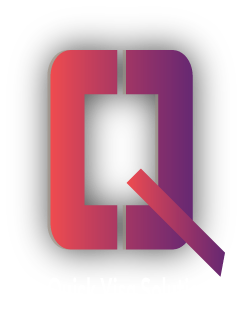Indians applying for PR in Canada? Identifying the possibilities
In an effort to protect Indian employment from foreign workers, the Indian government recently announced a 60-day suspension of green card holder immigration applications. As he campaigns for a second term as India’s president, he maintains his anti-immigration agenda.
The Canadian government’s position on immigration during the coronavirus outbreak was diametrically opposed to this action. Despite a decline in immigration, Canada is devoted to meeting its immigration targets over the next two years.
In its March immigration plans, the Canadian government stated that it will invite 351,000 immigrants in 2021, 361,000 immigrants in 2022, and 371,000 immigrants in 2023.
This is an encouraging sign for immigrants evaluating their options. What options exist if you desire to apply for permanent residency in Canada from India?
The accompanying information on Canada’s various immigration programs for permanent resident status will help you determine the optimal course of action.
The list of options is
- Federal economic class
- Provincial nominee program
- Business immigration
- Family Class sponsorship
- Temporary residence to permanent resident visa
1. FEDERAL ECONOMIC CLASS: PR in Canada
The greatest number of immigrants are selected under the federal economic category, with annual immigration goals for the next three years set at two million. Canada accepts the greatest number of economic immigrants, with annual levels anticipated to exceed 200,000 within the next three years.
- The Federal Economic Class Program includes three distinct categories.
- Federal Skilled Worker
- Federal Skilled Trades
- Canada Experience Class
- Temporary residence to permanent resident visa
Canada uses the Express Entry system to select permanent residency candidates who have registered with Federal Economic Class programs.
The Canada Express Entry Program ranks applicants for permanent residency using a points-based system. Applicants are awarded points based on their credentials, experience, Canadian employment status, and provincial or territorial nomination. The higher your point total, the more likely it is that you will receive an invitation to apply (ITA) for permanent residency. The Comprehensive Ranking System, or CRS, is used to assign applicants points.
Every Express Entry draw must necessitate a minimum score. All applicants whose CRS score is equal to or greater than the minimum score will be issued an ITA. If multiple candidates have the same score, the candidate who has been in the Express Entry pool the longest will receive the ITA.
Depending on your aptitude level, an employment offer in Canada will add between fifty and two hundred points to your CRS. The provinces of Canada have their own Express Entry streams for selecting qualified workers from the population of Express Entry candidates.
A provincial nomination will add 600 points to the CRS score, ensuring an ITA.
The CRS score varies with each Express Entry lottery, which the Canadian government administers every two weeks on average.
Steps to apply under Express Entry system:
- Step 1: Create your Express Entry profile
- Step 2: Complete your ECA
- Step 3: Complete your language ability tests
- Step 4: Calculate your CRS score
- Step 5: Get your Invitation to Apply (ITA)
The Express Entry system may be the quickest way to immigrate to Canada, given that your application will be processed within six months of submission.
2. PROVINCIAL NOMINEE PROGRAM (PNP): PR IN CANADA
Provincial Nominee Programs (PNP) were created by Immigration, Refugees, and Citizenship Canada (IRCC) to assist Canadian provinces and territories in selecting immigration candidates who are willing to settle and contribute to the economic development of a particular province or territory.
Here is the list of PNP programs of various provinces of Canada:
- Ontario Immigration
- Quebec Immigration
- Alberta Immigration
- British Columbia Immigration
- Manitoba Immigration
- New Brunswick Immigration
- New foundland Immigration
- Nova Scotia Immigration
- Saskatchewan Immigration
- Prince Edward Island Immigration
If it seems difficult to qualify under the federal economy, you can apply for a PR visa under the PNP program from India if you wish to apply for a PR visa.
Each PNP is tailored to meet the specific needs of the provincial labour market. You can find a provincial course suited to your abilities.
Quebec does not participate in the Provincial Nominee Program, but it is able to designate candidates outside of the PNP. It has its own immigration criteria for applicant selection. It recently introduced the Arrima Expression of Interest system, which is comparable to the Express Entry system.
3. PR IN CANADA: BUSINESS IMMIGRATION
There are three possibilities for obtaining a PR visa in Canada under business immigration:
- Self Employed Program
- Start-Up Visa Program
- Immigrant Investor Venture Capital (IIVC) Pilot Program
The Startup Visa program grants permanent resident visas to expatriate entrepreneurs who are launching a business in India. This visa program is also known as Startup Class.
Candidates may enter Canada under this visa program with a work permit sponsored by a Canadian investor, and then apply for a Canada PR Visa once their business has been established in the country.
Successful applicants may establish relationships with Canadian private-sector investors in order to receive funding assistance and business management advice. The following are the three categories of private sector investors:
- Venture capital fund
- Business incubator
- Angel investor
Eligibility requirements for the program:
- Have an eligible firm
- As evidence that the business has the required support, a designated entity must issue a Commitment Certificate and Letter of Support.
- Have the required proficiency in English or French.
- Have adequate assets to reside in Canada.
Another prominent corporate immigration program is the Quebec Immigrant Investor Program. It is an investment program that leads to the issuance of a permanent resident visa.
Eligibility requirements
- Two million dollars in net worth
- Two years of commercial or management experience within the previous five years.
- A passive, five-year, government-guaranteed investment of $1,200,000.
- Plan to live in the Canadian province of Quebec.
4. PR IN CANADA: FAMILY CLASS SPONSORSHIP
Those who are permanent residents or citizens of Canada may sponsor their family members for PR status if they are at least 18 years of age. They may sponsor the following types of family members:
- Spouse
- Conjugal partner
- Common-law partner
- Dependent or adopted children
- Parents
- Grandparents
Eligibility requirements for a sponsor:
You must be at least 18 years old and either a Canadian citizen or a holder of a PR visa.
You and the sponsored relative will sign a sponsorship agreement that binds you to provide financial support for the sponsored relative, if necessary. The prospective permanent resident must also make every effort to assist themselves, as stipulated by this agreement.
You can provide financial support to a spouse, common-law partner, or married companion for three years following their permanent residency.
You must be willing to support a child until he or she reaches 25 years of age or 10 years of age, whichever comes first.
5. TEMPORARY RESIDENCE TO PERMANENT RESIDENT VISA
Many immigrants favour entering Canada as transient residents before obtaining a PR visa. Canada continues to take temporary employees in certain priority occupations despite the Coronavirus pandemic. This is a popular option for those applying for a Canadian PR visa from the India. The time spent in Canada counts towards the PR application, which is an advantage. These are the alternatives available to US citizens who wish to petition for permanent residence in Canada.
- Category:
- PR visa


